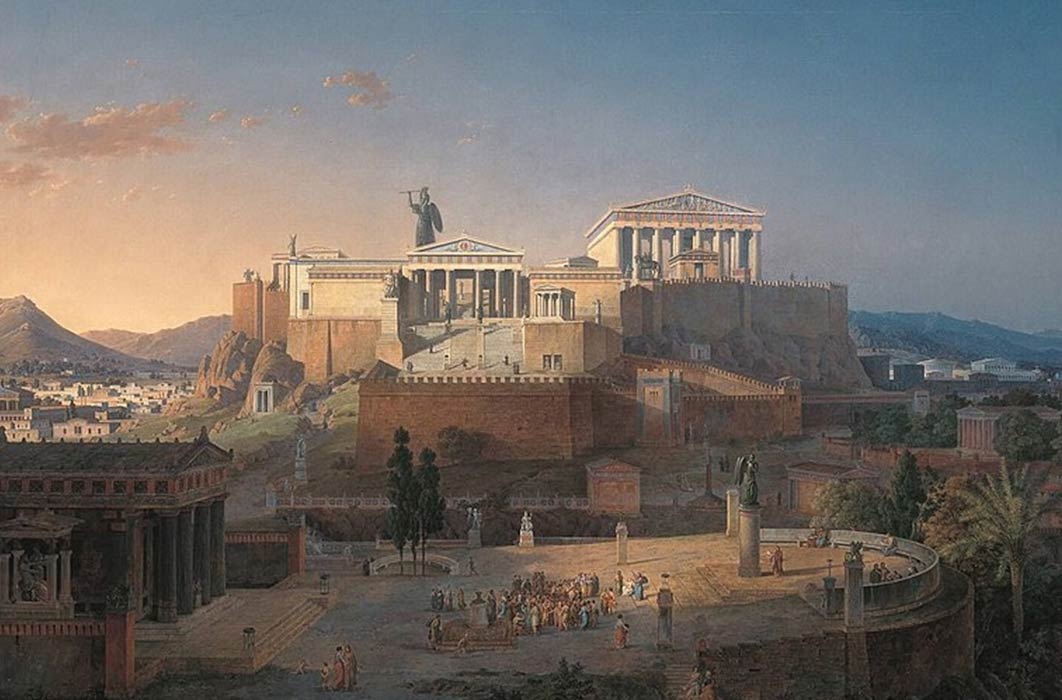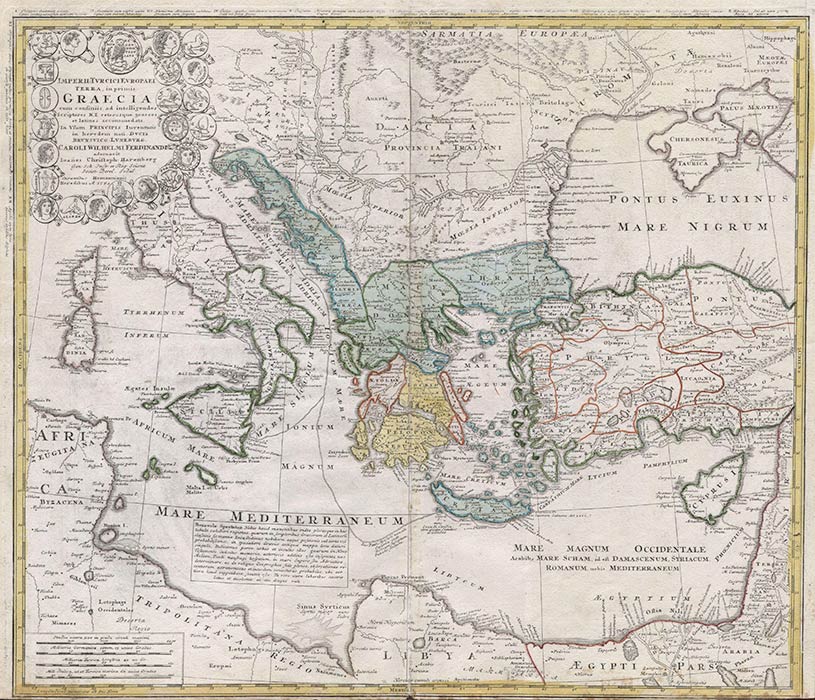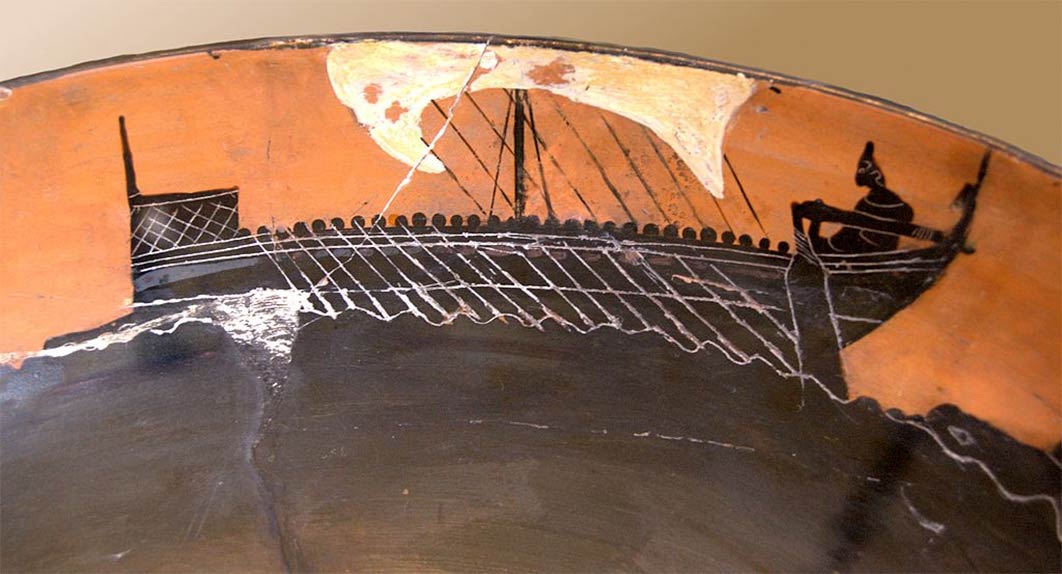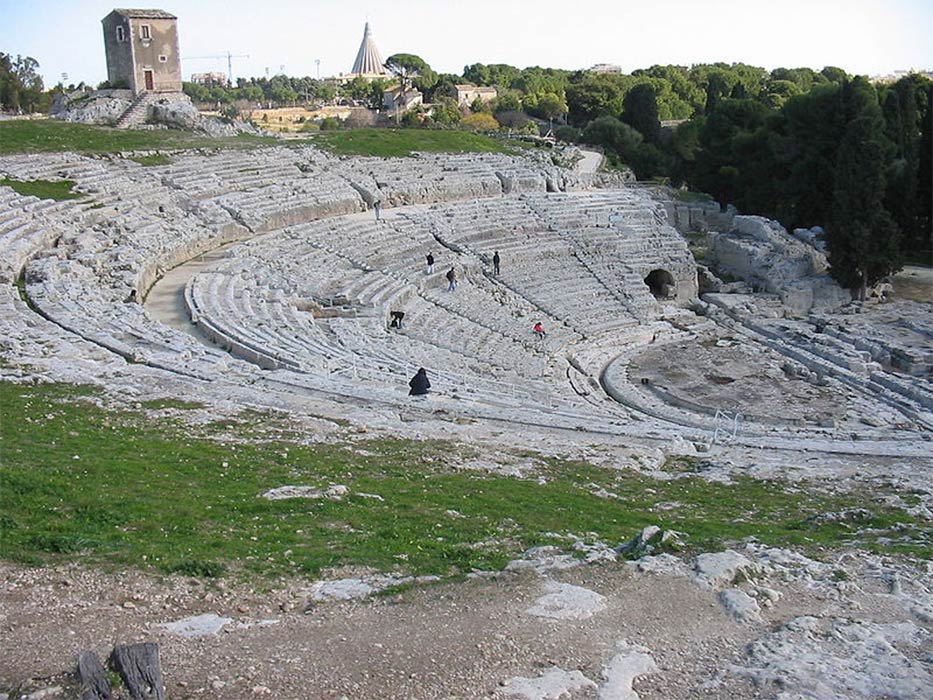
The Birth Of Greekness And The Great Land Grab
During the Archaic period in the eighth century BC, a tipping point was reached in Greece. Perhaps as a result of better nutrition and of changes in marriage practices, so that women married younger than they had before, the population increased dramatically over the course of the century, particularly in the second half, on both the mainland and the islands. The results of this population increase make the eighth century one of the most dynamic periods of Greek history.

Homann Heirs finest and most appealing maps of the ancient Greek World. (1741) (Public Domain)
Land Grab and Expansion
A growing population needs new land, and everywhere we find signs of expansion, at home and overseas. At home, large villages (as they were at the time) such as Athens and Corinth generated further villages, occupying more of the land that would in due course of time become Attica and Corinthia. The most extreme case of this kind of internal expansion was pursued by the Spartans. Sparta had already taken over and developed its home territory of Laconia in the ninth century BC, and by the end of the eighth it had also annexed the most fertile part of neighboring Messenia, awarding itself an enormous territory, compared to others.
Abroad, the emigrants first looked westward, where they had long had trade links. Corinth, for instance, established what would become the great Sicilian city of Syracuse and occupied much of the northwestern coastline of Greece, from Epirus to Illyris, including foundations on the Ionian Islands, so that it came to dominate the western trade routes. Soon a fair sprinkling of new Greek towns dotted the coastlines of Sicily and southern Italy. Euboeans joined Phoenicians in founding a highly successful emporium (port-of-trade) on the island of Pithecusae (modern Ischia), off the west coast of southern Italy. In the last third of the eighth century BC, a Greek overseas settlement was being founded roughly every two years. Generally speaking, the emigrant party consisted entirely of men, numbering in the dozens; women would be found where they settled, and further settlers would arrive once the place seemed viable.

Illustration of an Archaic Greek ship on pottery. (Public Domain)
Trade and Profit
Pithecusae was not favored with fertility. The chief purpose of the venture was to gain access to minerals from mainland Italy. Clearly, land-hunger caused by a growing population was not the only spur to emigration. Personal profit was also a relevant factor. There were fortunes to be made in the eighth century, and international trade increased rapidly, as shipbuilding techniques improved and prosperity recovered. At the mouth of the Orontes River in Syria, a trading post was set up around 820 BC by the Phoenicians (its ancient name is unknown, and today it is called simply Al Mina, “the emporium”), to bring goods from farther east— textiles, slaves, spices, perfumes, jewelry— into the Mediterranean in return for Greek agricultural products and minerals. There was another such trading post about 45 kilometers (27 miles) farther south down the Levantine coast, which later came to be known as Posideium to the Greeks (Ras al-Bassit today). Greek penetration, if not actual residence, at Al Mina, Posideium, and elsewhere on the Phoenician and Cilician coasts has been confirmed by pottery finds. A little later, starting at the beginning of the seventh century BC, the northern Aegean, the Hellespont, the Propontis (the Sea of Marmara), and the Black Sea were also opened up by Greek settlers, so that they could exploit the commercial potential of the Black Sea coastline and inland Thrace.

The theatre at Syracuse ( CC BY-SA 2.0)




